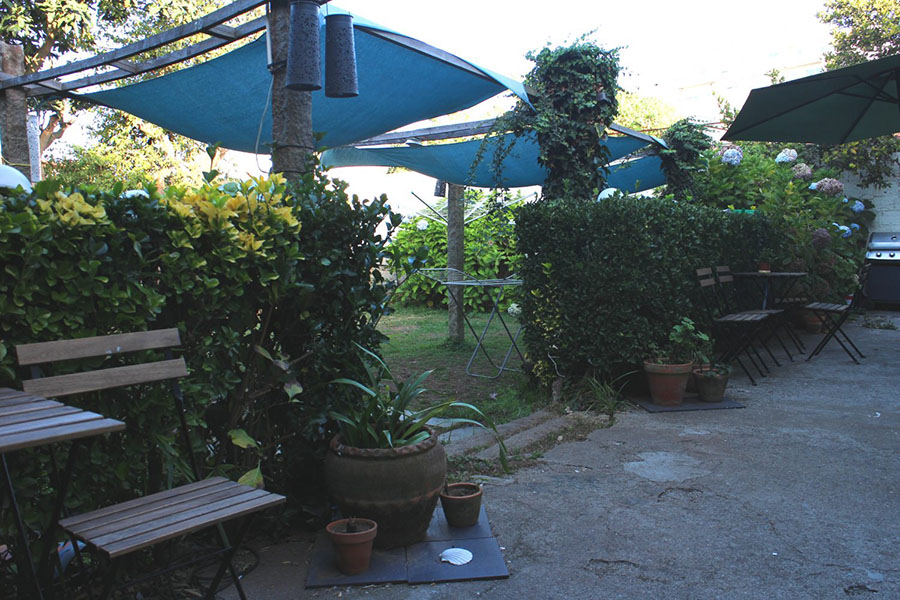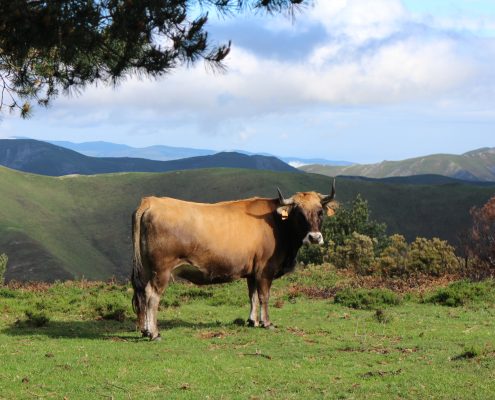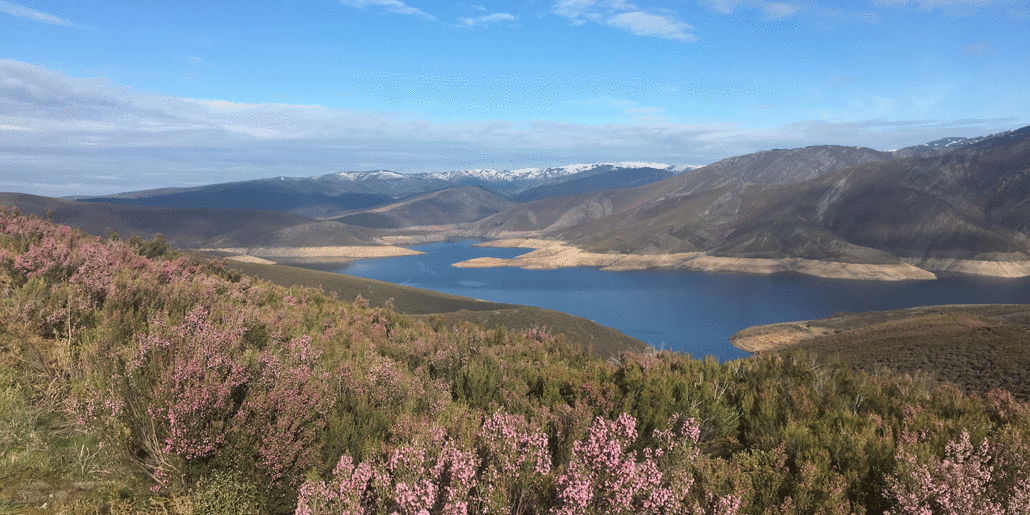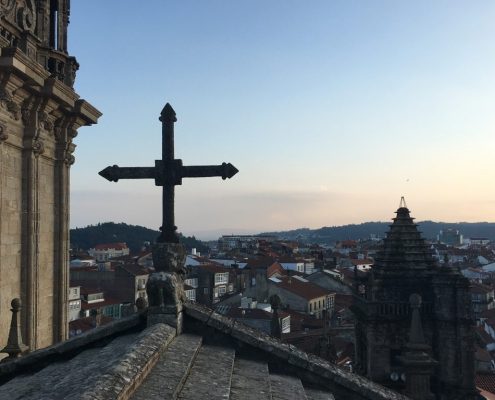GUIDE Camino Portugués from Porto to Santiago
Tips and tricks that are useful before embarking on your Camino Portugués
Here you will find the answers to many of the questions we asked ourselves before venturing out on the Camino Portugués, from Porto to Santiago.
What is the easiest way to get to Porto and how do I get from the airport to the center?
There are cheap direct flights to Porto if you fly via London and the airport is very near by the starting point of the camino. There is metro, but it only runs until 1 AM. If you miss the last metro, there are several Uber drivers waiting in the airport. We paid 12 euros for a door to door ride.
I am arriving late at Porto airport, where do I sleep the first night?
In Porto there is a donativo albergue, where we were allowed to arrive late. It is called Via Portus Cale and they received us generously at 01.30. You can find the albergue on their Facebook page. It is not situated in the beautiful, tile patterned streets of Porto center, but in a residential area. We took the metro from the center and saw it as an extra adventure.
Another really nice option, if you arrive late, is the private albergue Best Guest Porto Hostel (commercial link) where you can arrive after midnight if needed. It’s situated in the heart of the old town and costs 16 euro for a bed in a four bed room.
How long time do I need to spend in Porto?
Porto is a fantastic city. Spend some time exploring the beautiful streets with tile decorated houses. It is not every day that you come to Porto. Have port, take a ride in the ancient wooden tram and spend an extra night at the Via Portus Cale albergue where pilgrims are allowed to spend more than one night.
Which route shall I choose? Costa, Central or Variante Espiritual?
The Camino Portugués is a difficult camino to plan for, if you are the type of person who likes to plan your stages ahead of time. It is probably the choice between the three routes that is most confusing:
- The Central route
- The Costa route
- Variante Espiritual
We walked pieces of the three main routes and have come up with our own combination for a Camino Portugués.
I had read several places that there was a stressful and crowded traffic out of Porto, so we chose the alternate route out of Porto described in John Brierley’s guide. It goes along the river Douro via Matosinhos (a tourist town) and further out onto the Atlantic coast down the Costa route. Beautiful and warm but also monotonous with kilometer long board walks.
I had had enough by day 2, so in the town Vila do Conde we crossed into the central route by Sao Pedro do Rates. We walked 4 stages along the Central route until the town of Pontevedra. After Ponevedra, we felt adventurous and crossed over to Variante Espiritual, which is a very beautiful detour from the central Camino Portugués (36 kms extra). It starts 3 kms after Pontevedra and rejoins with the central route again in Padrón.
We had set 9 days aside for the route from Porto to Santiago, but it became a bit stressful timewise, due to the detour of Variante Espiritual. Seen in hindsight, we should have included between 10 or 11 stages along Variante Espiritual to enjoy and take in the silence and beauty. See our suggestions for the stages – learnt the hard way.
Are there many pilgrims walking Camino Portugués?
Yes, the Portuguese route is growing in popularity and size. In the past year the route’s share of pilgrim traffic has risen 13 %, while the traffic on the French route has decreased. Camino Portugués is the second most crowded route to Santiago. There is a kind of ski resort atmosphere on parts of the route, and in the larger towns you can find souvenir shops and cafes with the pilgrimage logo. The summers are worst when it comes to crowdedness – here is the line for the municipal albergue in Pontevedra (august 2018):
Do you want to get away from this pilgrim traffic, take one of the sideways and meet the locals. Choose other stages than the ones you find in guide books, and remember pilgrims usually arrive in streams and walk together in droves. If you walk a bit longer one day or take a day off you may suddenly find yourself alone enjoying the silence on the route. The coastal route is significantly less walked, and should you want to get away completely then enjoy the peace and quiet, solitude and nature on Variante Espiritual.
Where is the best place to sleep?
At Fernanda and Jacinto in Lugar do Congo!
Without any doubt!
We spent an evening and night there that I will never forget. The small family was the first to build a dormitory and start inviting pilgrims in along the Camino Portugués. Enjoy Fernanda’s motherly care, tapas from the turquoise outdoors kitchen, the company of her four silly dogs and listen to the story of when one of the dogs ventured out and all the way to Rubiaës – without permission. Enjoy the exquisite dinner and breakfast with the family in their own kitchen and help Fernanda fetch water from the well.
Two Dutch pilgrims arrived after us – and were very tired. We gave them our beds and slept under stars in the garden. Most romantic night on the camino EVER. Let Fernanda know that you are coming, her number is +351 914 589 521 and she speaks English.
Is it true that Camino Portugués is a flat camino?
Yes, the route is mainly rather flat. But both the Central route and Variante Espiritual have a few serious inclines. These are on the Central route around 7 kms before the town of Rubiaës and on the Variante Espiritual from the coastal town of Combarro and up to the town of Armenteria where a monastery and dormitory are.
When I say steep I mean rollercoaster steep. However, both inclines are incredibly beautiful. You can look forward to it. The rest of the trek between Porto and Santiago has are several other “rises on the horizon”, but they are not long.
The cobblestones mentioned are they really that bad?
Kindda yes. The beautiful cobblestoned streets and the paths topped with cobblestones of Portugal presented a challenge to me. I enjoyed the look of them and liked the idea of walking on them, but seriously… my feet ached and were hot all night. It felt like my feet had been beaten with a meat hammer while I slept.
What shall I do to get pass the cobblestoned roads best?
Unfortunately I can’t walk in hiking boots at all, because I roll on my foot when I walk. I wear Blundstones instead with extra padding and inserts. This allows flexibility, but on cobblestones, I think shoes with rigid soles are probably best – as long as you can walk well in them.
What shall I pack for the Camino Portugués?
My advice is to pack for the Portugués as you would pack for any other camino. Bring the utmost important things that can help you through the winds of the Atalntic ocean if you are walking the Costa route. It could for example be a headband for windy and sunny days or a rain poncho with a hood for the rainy days.
What about the boat trip on Variante Espiritual?
On the second stage of Variante Espiritual you have the possibility of experiencing the world’s only Via Crucis (cross roads) by water. You will sail 28 km of this route, along the trails of Saint Jacob’s last trip – his bones were transported to Santiago on these boats in a journey like this. At the same time you will have a first hand experience of the clam fishing culture of Spain. The stage goes from Vilanova de Arousa to Pontecesures 2 kms before Padrón.
The boat trip is around an hour in the inflatable boat La Barca del Peregrino. The captain is unbelievably cool, calm and collected, responsible and a genius storyteller. A hero from Variante Espiritual. The boat trip costs 16 euros if you buy it from hospitalero Emilio at the municipal dormitory or 19 euros, if you buy it from same Emilio by the peer! If you buy the ticket at the town’s public dormitory, you will find it in a very peculiar place: the dormitory is situated in the town’s sports hall. If hospitalero Emilio isn’t there, you can catch him on +34 633 906 490.
There is no fixed timetable, the departures are dependent on the tide. Always call the boat company at the latest the day before to check the times of departure, and let them know you want to sail with them on +34 607 911 523. Another company, Amare, also sails the route – see more and book here. If you don’t want to sail this stage, you can walk it easily. The path is marked and is 28 kms long.
Does one get the compostela, even if one takes the boat?
Earlier on it was possible to get the compostela for having completed your pilgrimage, even if you took the the legendary boat trip at Variante Espiritual. Unfortunately in 2018 there have been several incidents where pilgrims didn’t receive their compostela, because they had sailed part of the way. The reason for this is that the pilgrim’s office conditions a compostela on having walked the last 100 kms on foot with no help from any vehicle. They look for this boat stamp from “La Barca del Peregrino”:
If you have the boat stamp in your pilgrim’s pass, there is a risk you won’t be registered as a pilgrim and you won’t receive your compostela. Therefore: If the compostela is important to you, say “thanks but NO thanks” to the boat stamp, even if you want to take it.
What availability is there for buying provisions during Camino Portugués?
There are fewer natural water springs on Camino Portugués than the other caminos, so we had to buy water to keep hydrated properly. On Variante Espiritual there are very few services, unless you walk in the summer season.
















































Hi,
Thank you for sharing this. I am planning to follow this exact route in September 2023.
Please will you be so kind as to recommend accommodation in Villa Cha?
Many Thanks !
Hi Henriette. Actually the stages are not exactly the ones we walked, so Ido not have suggestions in Vila Cha. When we walked, we often realised what could have been nice – places we hould have chosen. When we share ideas for stages, we always ‘correct’ them in this way in order to ensure others geta ood hike learning from our mistakes. In the Wisely/Wise pilgrim app for Portuguese you see all accommodation along the camino route. Bom camino! Marie
Great website guys. Just wanting to clarify how long the merging of the 3 routes took. And was it adequate timeframe to enjoy the places you pass along the way.
Hi Jo. We walked the merging of the routes in nine days – we would recommend at least one day extra as some of the days were really long. We have corrected this in our suggested stages. It varies a lot how long pilgrims like walking each day. When everything is possible, we usually end up with an average of 28 kms a day. Some prefer shorter days, others longer. It is all about finding you own pace. Buen caminho Marie and Torben
This is an excellent find for me! This is what my husband and I are planning for , next year 2023 in the Spring ( after EAster). We have never done a pilgrimage but hike often here in BC Canada. We will have 2 weeks to do a camino, so this seems the most appropriate chunk to do. We are also not fond of crowds, and souvenir shops. Excellent tips and pictures here. So grateful for this.
Hi Paulina. So glad you find our camino blog useful. I am embarking the Portuguese Camino again this fall with my three kids and son-in-law. Looking so much forwards to share the camino with the, Bom caminho to you! Marie
Thank you! Your time and effort is appreciated! This has been so informative and helpful for my planning!?
How wonderful! We are SO happy to be able to share our love for the camino. Bom caminho from Marie and Torben